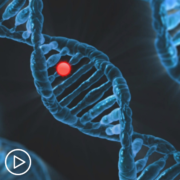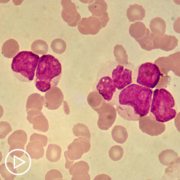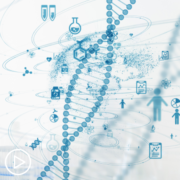Tag Archive for: TKD mutation
What Is FLT3-Mutated Acute Myeloid Leukemia?
What Is FLT3-Mutated Acute Myeloid Leukemia? from Patient Empowerment Network on Vimeo.
Some acute myeloid leukemia (AML) patients may have an FLT3 mutation. Dr. Catherine Lai from Penn Medicine shares insight about the two types of FLT3 mutation, treatment options for FLT3-mutated AML, and progress in research
[ACT]IVATION TIP from Dr. Lai: “Ask your oncologist, if your FLT3 mutation testing was done, ask which type of mutation they have, if it’s the ITD or TKD, if they are FLT3-positive and what the drug options are available for them.”
Download Resource Guide en español
Related Resources:

|

|

BIPOC Patients Living with AML | Mortality Rate and Favorable Genetics |
Transcript:
Art:
Dr. Lai, what is FLT3 mutated AML and what treatment options do patients with FLT3 AML have?
Dr. Catherine Lai:
Yeah, so FLT3, FLT3 mutations occur in about 25 percent to 30 percent of patients. There are two different types of FLT3 mutations. There’s a FLT3, the ITD mutation and the FLT3, the TKD mutation. They just are there, different parts of the mutation on different parts of the cell, and so how I think about that is, if you think of a leukemia cell and each leukemias has a different color-coded flag, and so the FLT3 mutation I think of is just having a specific color coding, and while a FLT3 mutation in general does predict for a worse prognosis for patients, we do have targeted treatments. In a newly diagnosed setting, we have midostaurin (Rydapt), which is added to intensive chemotherapy for those fit enough to tolerate it.
And in the relapsed refractory setting, we have a medication called gilteritinib (Xospata), which is given as a single agent, so a chemo pill, and that was compared to all types of chemotherapy, both intensive and low intensive chemotherapy, and that pill alone and the refractory and relapsed setting was better than either of the chemotherapies alone, so we’ve made a lot of progress for the FLT3-mutated patients to the majority of those patients end up going to transplant if possible, and so there are studies that are looking at FLT3 inhibitors in the post-transplant setting to also help improve long-term survival and overall survival. So the activation tip from that standpoint, that is to ask your oncologist, if your FLT3 mutation testing was done, ask which type of mutation they have, if it’s the ITD or TKD, if they are FLT3-positive and what the drug options are available for them.



